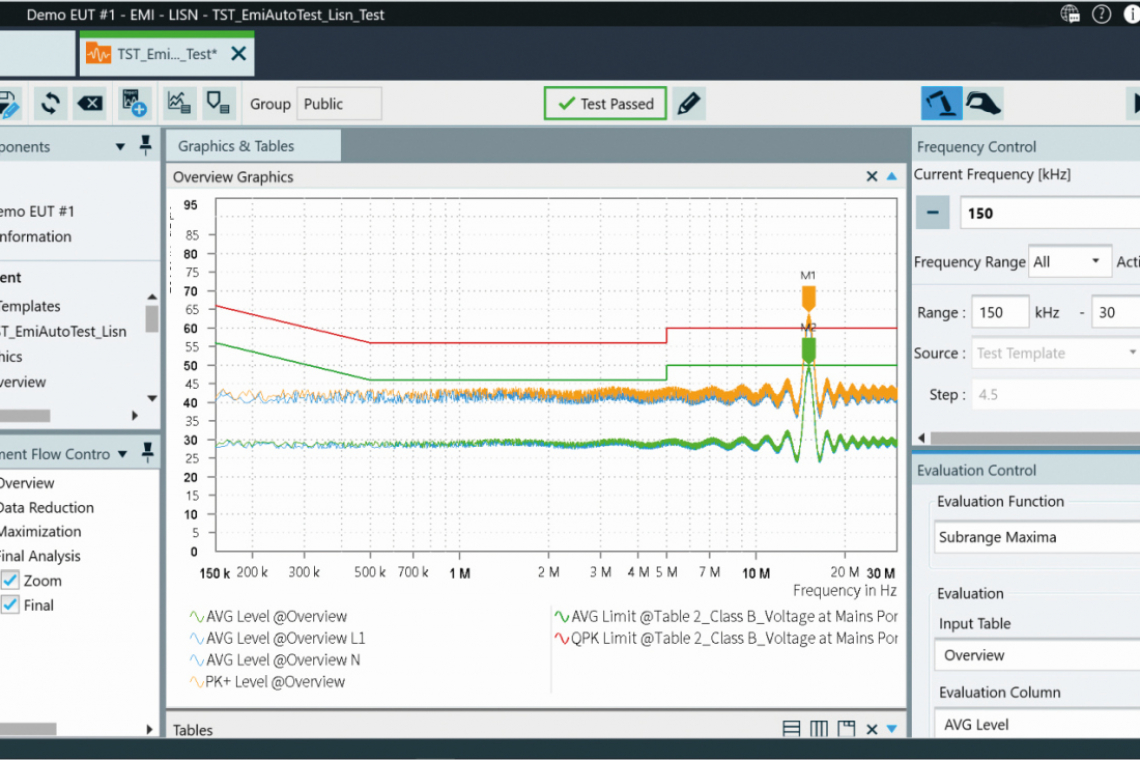Rohde & Schwarz has further developed its ELEKTRA EMC test software, added new measurement methods and adapted it to new standards so that users can efficiently perform measurement tasks interactively or fully automatically.
The new ELEKTRA test software suite from Rohde & Schwarz (R&S), headquartered in Munich, Germany, makes it easier for users of R&S ES-SCAN and R&S EMC32 to migrate hardware setups, test templates, settings and tests from R&S ES-SCAN and R&S EMC32 to R&S ELEKTRA. According to the manufacturer, the EMC software family is optimally adapted to Rohde & Schwarz EMC measurement instruments as well as signal and spectrum analyzers.
It supports all current standard-compliant emission, radiated and conducted immunity measurements, including immunity tests in mode swirl chambers (RVC), the use of AWGN interference signals and the simultaneous application of multiple interference signals. ELEKTRA has a predefined software library that covers all common EMC standards - including relevant limit lines, measurement setups and transducer factors to simplify test configuration and enable a faster test start.
Complexity increases due to different EMC standards
The user interface offers access to all important functions for the test setup on one level. Commonly used items such as test plans for EUTs (Equipment Under Test), hardware setups, test templates, test results and reports can be pinned to the 'dashboard' for quick and convenient access. The increasing complexity of EUTs means that multiple requirements from different EMC standards need to be met. ELEKTRA offers the user the ability to create and manage an EUT-centered test plan for a specific EUT. This is to prevent a required test from being omitted and helps to create a comprehensive report.
ELEKTRA provides automated test execution by controlling and monitoring the devices used. Automated and interactive test execution can be switched and allow for detailed debugging. Users can simulate and validate test configurations and sequences before the actual test to ensure that hardware resources are used efficiently.
The software monitors the plausibility of the measurement parameters and saves all information relevant to the measurement together with the measurement results. In this way, ELEKTRA ensures the reproducibility and comparability of the measurements. Test reports can be issued immediately after the measurements. Test reports and dedicated measurement data for test specimens can be collected and stored in the software's SQL database. The measurement data can be forwarded to higher-level ERP or CRM systems, for example, via a standard interface of this database. With the help of existing interfaces, almost all devices in the laboratory can be integrated into the test setup.
Compliant standards for digitally modulated interference signals
With the R&S ELEMS-AMEX option, ELEKTRA also supports automotive and military EMS (Electro Magnetic Susceptibility) tests according to common automotive and military standards such as MIL-STD-461, ISO 11451 and ISO 11452 as well as various OEM standards. These standards cover digitally modulated interference signals (e.g. OFDM signals) and radar pulses. Automotive and military standards require special setups and procedures for measuring sensitivity to RF interference signals. These requirements relate, for example, to modulation, level matching and system monitoring, which are fully supported by the R&S ELEMS-AMEX option.
Automotive electronic assemblies are usually equipped with an interface for communication via bus systems such as CAN or LIN. The R&S EMCAN64 middleware included in R&S ELEMS-AMEX enables read/write access to these buses using the standard CANoe and CANalyzer software tools.





